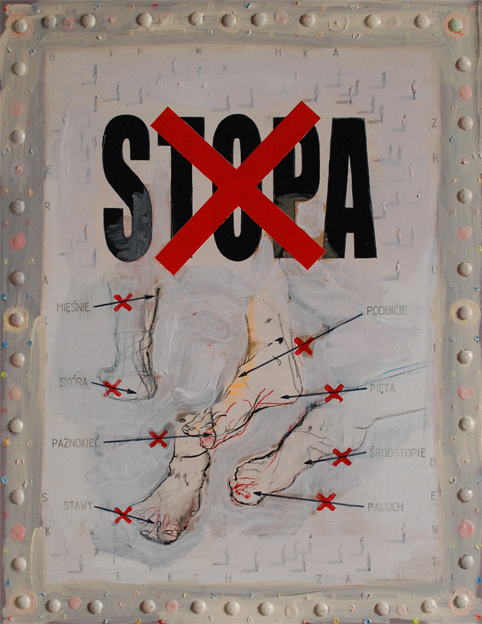paintings 12
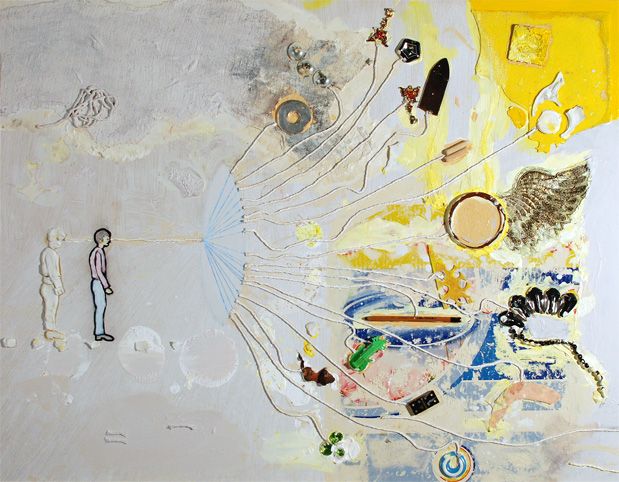
Sight is one of the senses through which Śunjata can manifest. Sight functions differently in Śunjata than in conventional reality. In the Void, the mind uses holistic vision. It does not direct its attention to any one thing and does not focus its eyes on any one thing. Nor does it concentrate on the whole. The mind sees everything at once and at the same time. It doesn't watch a scene by wandering its eyes, moving them to more things. Even if the mind moves the eyeballs it still sees everything in its entirety. The field of sharp vision, which is usually about 15 degrees, reaches the limits of the visual field in Śunjata. All things seen are equally sharp and equally visible.
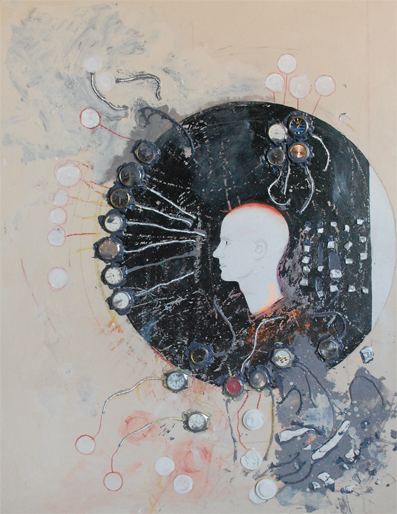
Mandala of non-existence of time. In Śunjata, something like time is a complete abstraction. In Śunjata it would be difficult to even imagine what time would look like. One would not know where it would come from or what it would be used for. In Śunjata there is no need for time to exist. In Śunjata it is well seen that time is not necessary at all. In Śunjata the world gets along just fine without time. In Śunjata the world functions normally without time. In Śunjata the world functions perfectly without time.
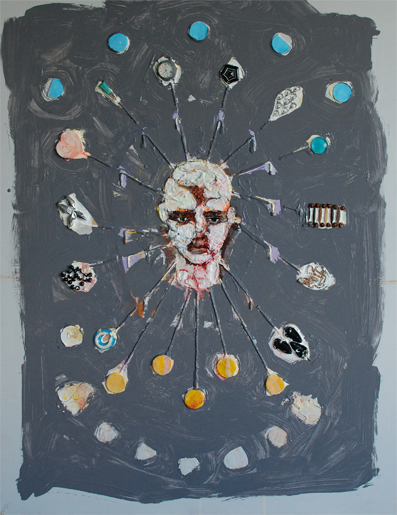
Allegory of the Emptiness depicted as a rupture of the mind's connections with the mental world of objects and phenomena (objects visible as informenes). Phenomena are marked in yellow. In blue color are marked inaccessible or only partially accessible to cognition noumena.
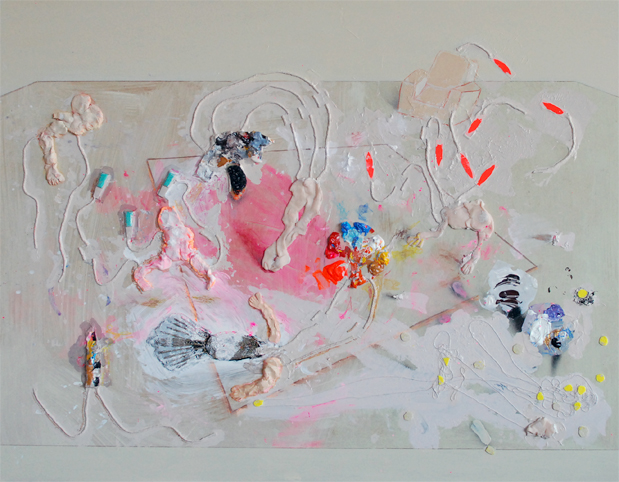
An allegory of a situation in which a Kushi-hermit tells Agnes M.M. what Śunjata is like. He describes how objects are inconceivable, unimaginable and bizarre. Unambiguous - in the sense that they are things and nothing more. Objects do not reveal their characteristics. They are unspecified. Their state is undetermined and therefore they are all the same. Agnes M.M. as seen in Śunjata is abnormal (objects are not normal in Śunjata either). Her actions are incomprehensible and meaningless (phenomena have no cause and effect, and meaning does not exist in Śunjata). And she herself is thoughtless and mindless (thoughts and reason do not exist in Śunjata). It is impossible to say whether Agnes M.M. is a man or a woman. Just as the Kusha-emptyer is neither male nor female.
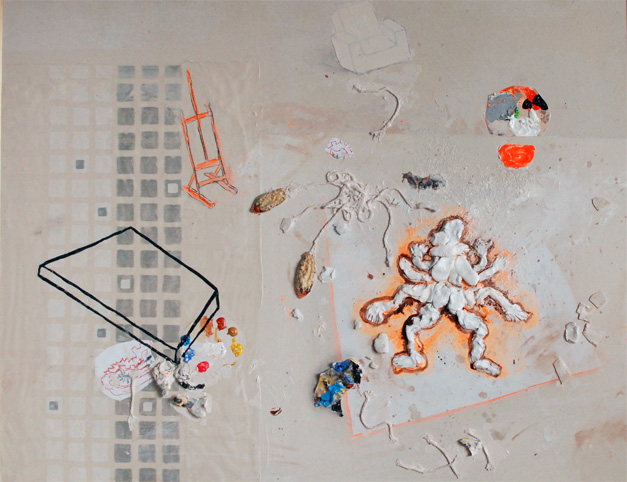
Act - the indeterminacy of the physical body in Shunyata. In Shunyata, the physical body does not pose for the act, because the act is not an act and the posing is not posing. It does not undress or feel restraint. For in Shunyata there is no one to undress and no one to feel restraint. He does not lie down on the platform and spread his legs. He does not tweak his buttocks and correct the position of his breasts. And finally, he doesn't have sex.He doesn't get dressed and leave the painting studio.

Nude as a mirror image of the mind devoid of duality (Shunyata).
To make the image fully consistent with reality, the missing element of the representation, the subconscious, is shown separately on a table.
To make the image fully consistent with reality, the missing element of the representation, the subconscious, is shown separately on a table.
A view of a bus carrying people - a bus study in Shunyta. In Shunyta, a bus cannot be a bus. As a bus it does not exist because it has no attributes. Though it does not exist as a bus, yet as a thing it exists physically. Existing physically, it has no form. Isolated from attributes, physically existing bus is Emptiness. In Shunyta, the bus is simultaneously Empty and full of people. Although it should rather be said that the bus is simultaneously Empty and full of Empty people. With the observation that "full" is also Empty.

"Emptiness is form, and form is Emptiness" - this claim is a misleading simplification. First, it refers to two different realities. Emptiness exists only in the reality of Śunjata, and form exists only in conventional reality. Second, the mind cannot simultaneously, at the same time, reside in two different realities. Neither can it perceive Emptiness while being in conventional reality, nor can it perceive form while being in Śunjata reality. The claim "Emptiness is form and form is Emptiness" is a conventional claim. The conventionality lies in the implicit assumption that while Emptiness and form within a single reality cannot exist together, the concepts associated with them already do (within conventional reality). Emptiness is form realistically? No. Emptiness potentially is form? Yes, form is emptiness realistically? No! Form potentially is Emptiness? Yes! "Emptiness is form" should be understood as follows: that which is Emptiness (a thing devoid of form) in the reality of Śunjata, is - it takes form (assumes properties), after passing into conventional reality. "and form is Emptiness" should be understood as follows: that which has form (has properties) in conventional reality, is - becomes Emptiness (loses properties), after the transition to Śunjata reality (loses properties in the case of objects and disappears in the case of concepts). Form is marked in green and Emptiness in white.
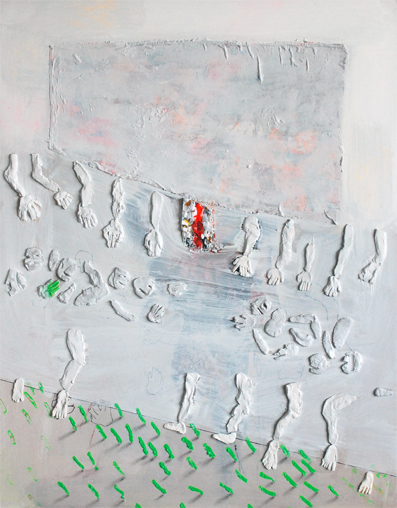
No meditative quest in a Tibetan monastery there. Śunjata is present here, beside and around you, now and in every moment to come. All one has to do is take one's eyes off conventional reality and shift them to the reality of Śunjata. The metaphor seen in Śunjata is a white Toyota Corolla sedan vintage 2021, moving from north to south on a local road in Wolborz.

Self-portrait.
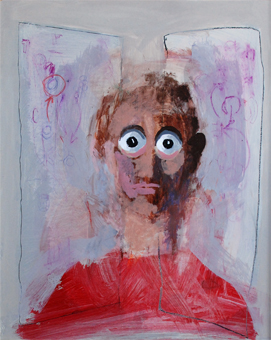
The emptiness of the foot. The study of the foot in shunyata.
In shunyata, the foot has no name. It is not used for movement. It is not part of the human body. Nothing is known about it although it exists physically as meat on the bone. But in shunyata the meat on the bone also has no name and nothing is known about it. In shunyata, the foot has no toe, no heel, no skin, and no nails, although physically it has all these. In shunyata the foot has no form - it is empty.
In shunyata, the foot has no name. It is not used for movement. It is not part of the human body. Nothing is known about it although it exists physically as meat on the bone. But in shunyata the meat on the bone also has no name and nothing is known about it. In shunyata, the foot has no toe, no heel, no skin, and no nails, although physically it has all these. In shunyata the foot has no form - it is empty.
